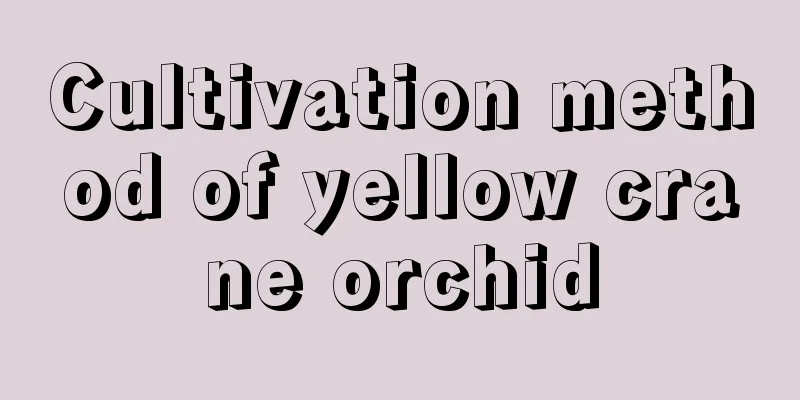Cultivation method of yellow crane orchid

1. Maintenance methods1. Temperature: It is suitable for growing in a warm environment. Although it has a certain degree of cold resistance compared to other plants, its cold resistance is not very high. The winter temperature needs to be kept above six degrees, otherwise frostbite will occur. When the temperature is between 18 and 20 degrees, the plant's growth ability is the strongest. The high temperature in summer can be cooled appropriately to reduce some adverse reactions caused by high temperature. 2. Watering: There are certain requirements for soil humidity, because only moist soil can allow it to grow normally without being affected. Water it frequently during the breeding period, especially in summer, and if the air is too dry, you must also add a certain amount of moisture to the surrounding air. However, after flowering, the plant has a dormant period, during which time you can limit watering, including in winter when the water demand is not high. 3. Light: It does not have high requirements for light. Adequate and warm sunlight is the most suitable. It is enough to provide a bright environment during the breeding period to ensure healthy growth. Strong light needs to be shaded, and it cannot be exposed to direct sunlight in summer. 4. Fertilization: During the growth period, you can apply some decomposed organic fertilizers once every half a month, but be careful not to apply too concentrated fertilizers. You can stop fertilizing in winter. 2. Breeding techniques1. Reproduction: Division is the main method of reproduction. The best time is before the new branches sprout in spring. It can be combined with repotting. Division should be done every two to three years. 2. Pruning: No drastic pruning is required. Just cut off some of the remaining flowers after flowering, mainly to prevent nutrient loss. There is no need to over-prune its branches. 3. Problem diagnosis and treatment1. Disease: Sheath rust will occur. During the breeding period, you should pay more attention to the branches and leaves of the plants. You can spray Zineb powder to control it. 2. Pests: Scale insects may occur, and you can spray dichlorodiphenyltrichloroethane solution to prevent and control them. IV. Other issues1. Toxicity: It is not poisonous and its stems can be used as medicine. 2. Can it be grown at home? Yes, the flowers are relatively elegant and suitable for cultivation. |
<<: How to grow Lespedeza well
>>: How to raise Brazilian beauties
Recommend
Why doesn't gardenia bloom?
Loved for its fresh fragrance and white flowers w...
How to save seeds of silkworm grass
How to get silkworm grass seeds Cordyceps sinensi...
Disease control of hibiscus
Hibiscus sooty mold The occurrence of sooty mold ...
How to plant glass jade? Planting time and method
Glass Jade Planting Time Glass Jade is best plant...
Green vegetable varieties picture What are the common green vegetables
Green vegetables are a general term for pollution...
How big is the world's largest watermelon and where is it produced?
1. How big is the world's largest watermelon?...
What to do if hibiscus leaves turn yellow
Pay attention to watering when planting hibiscus ...
How to plant blood-replenishing grass
Soil and fertilizer selection for Limonium Limoni...
How to take cuttings of bougainvillea
The propagation methods of Bougainvillea include ...
Cultivation methods and precautions of rich coconut
1. Breeding methods 1. Soil: When planting, you s...
How to grow Selaginella to produce multiple heads
1. Soft lighting Selaginella grows best in semi-s...
Still letting these horrible things stay in your home? Beware of cancer
Chlorophytum Chlorophytum is a beautiful and easy...
When is the best time to plant loquat seeds?
Loquat seed planting time Loquat is a perennial p...
It’s the flowering season for Christmas cactus. Take care of it like this so it will bloom like a waterfall.
Cuttings of Christmas cactus The temperature drop...
What is rosemary?
1. What is It is a plant with a tall shape, likes...









